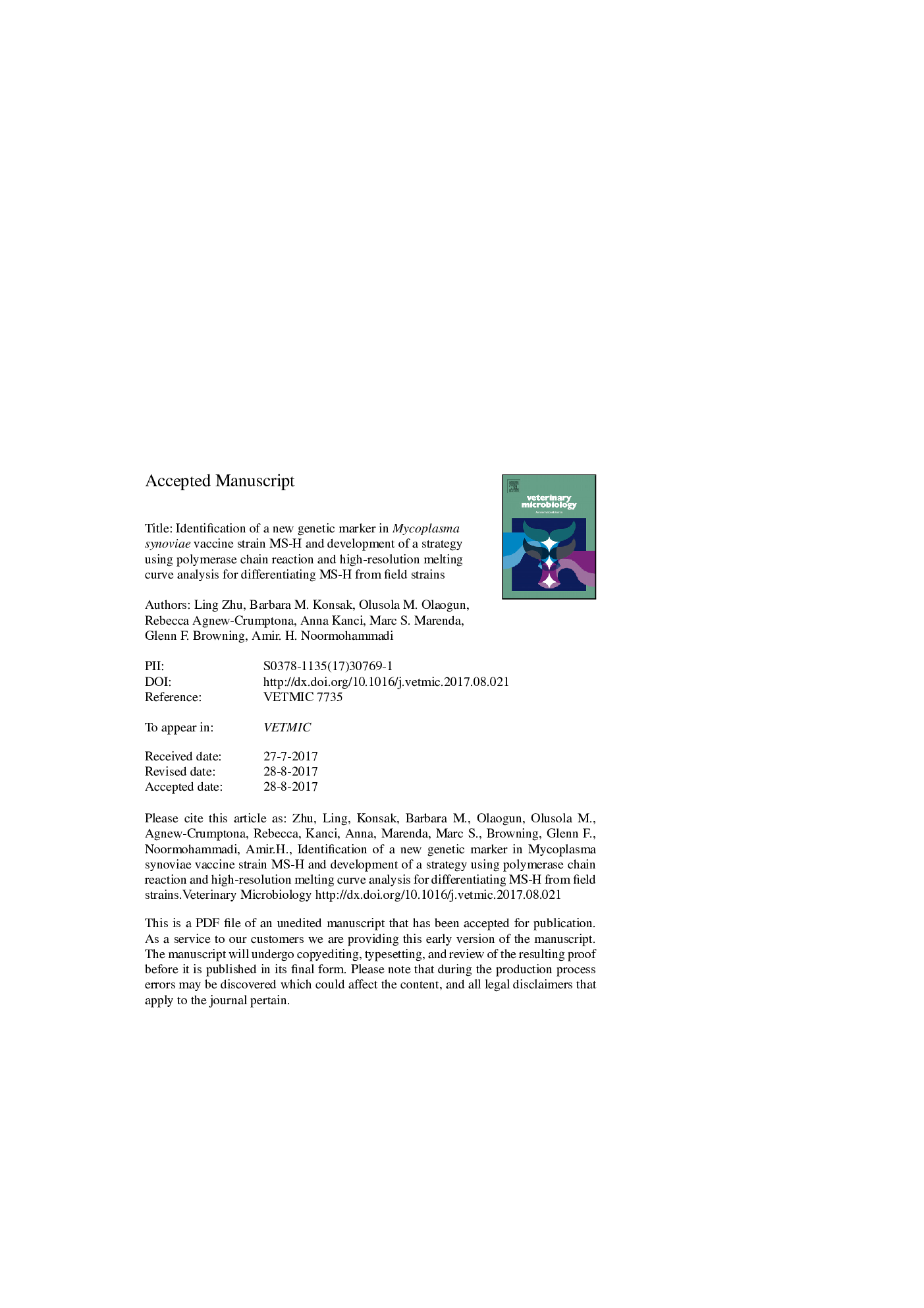| Article ID | Journal | Published Year | Pages | File Type |
|---|---|---|---|---|
| 8505742 | Veterinary Microbiology | 2017 | 27 Pages |
Abstract
Mycoplasma synoviae (MS) is an economically important avian pathogen worldwide, causing subclinical respiratory tract infection and infectious synovitis in chickens and turkeys. A temperature-sensitive (ts+) live attenuated vaccine MS-H, derived from the Australian field strain 86079/7NS, is now widely used in many countries to control the disease induced by MS. Differentiation of MS-H vaccine from field strains is crucial for monitoring vaccination programs in commercial poultry. Comparison of genomic sequences of MS-H and its parent strain revealed an adenine deletion at nucleotide position 468 of the MS-H oppF-1 gene. This mutation was shown to be unique to MS-H in further comparative analyses of oppF-1 genes of MS-H re-isolates and field strains from Australia and other countries. Based on this single nucleotide, a combination of nested PCR and high-resolution melting (HRM) curve analysis was used to evaluate its potential for use in differentiation of MS-H from field strains. The mean genotype confidence percentages of 99.27 and 48.20 for MS-H and field strains, respectively, demonstrated the high discriminative power of the newly developed assay (oppF PCR-HRM). A set of 13 tracheal swab samples collected from MS-H vaccinated specific pathogen free birds and commercial chicken flocks infected with MS were tested using the oppF PCR-HRM test and results were totally consistent with those obtained using vlhA genotyping. The nested-PCR HRM method established in this study proved to be a rapid, simple and cost effective tool for discriminating the MS-H vaccine strain from Australian and international strains in pure cultures and on tracheal swabs.
Related Topics
Life Sciences
Agricultural and Biological Sciences
Animal Science and Zoology
Authors
Ling Zhu, Barbara M. Konsak, Olusola M. Olaogun, Rebecca Agnew-Crumptona, Anna Kanci, Marc S. Marenda, Glenn F. Browning, Amir. H. Noormohammadi,
